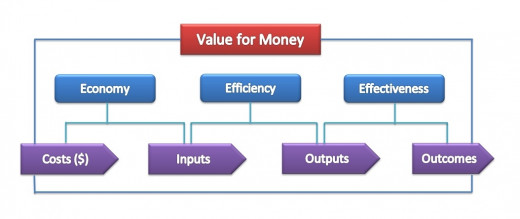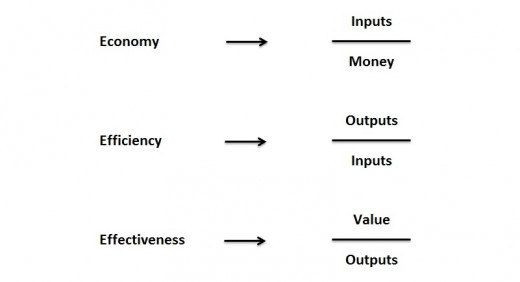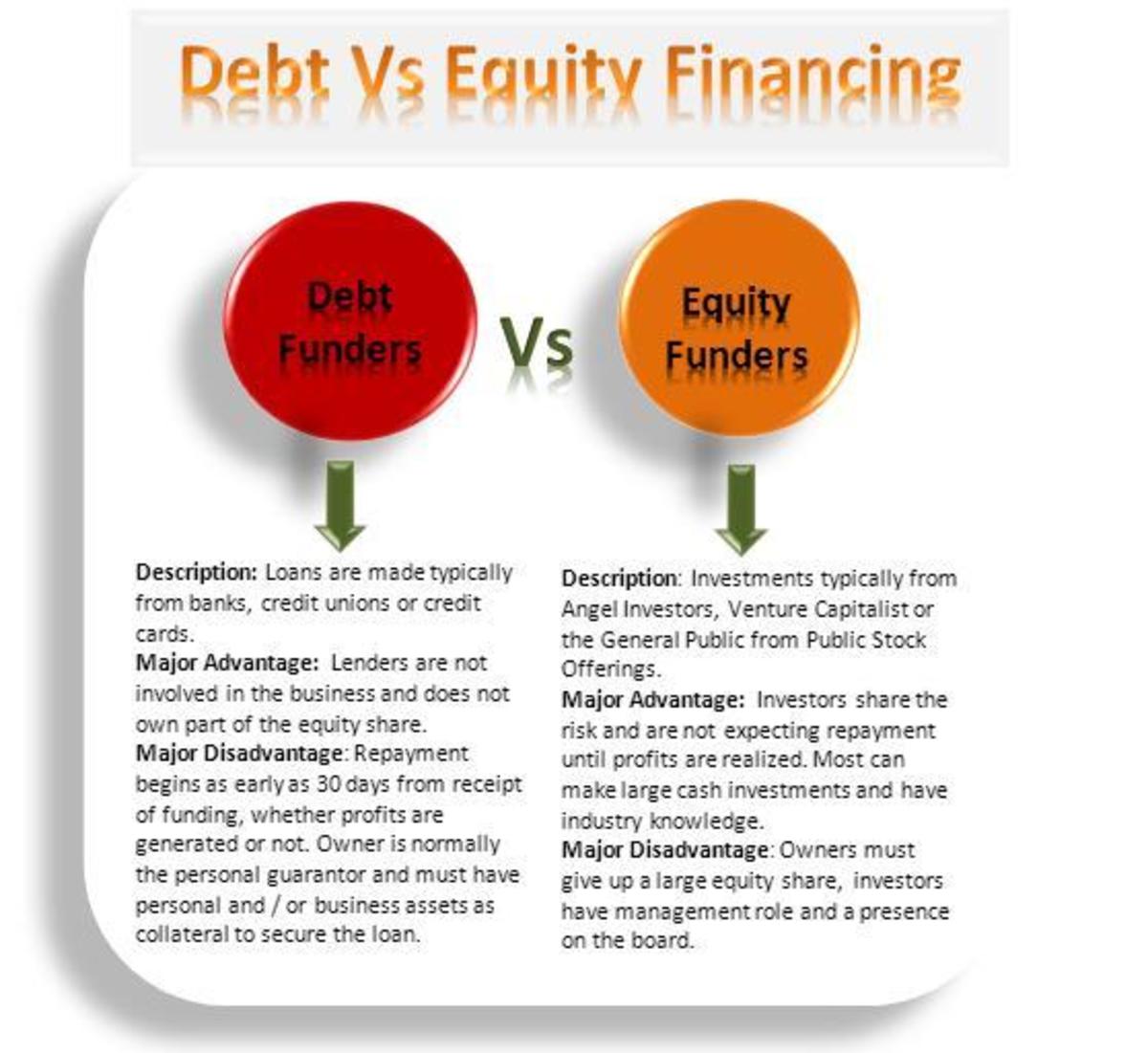Measurement of Value for Money in private and public sectors
VFM or Value for Money has been defined as achieving the best possible combination of services from the least resources. In other words VFM means maximizing benefits for the lowest cost.
Value for Money has three constituent elements.
- Economy
- Efficiency
- Effectiveness

Economy is concerned with the cost of the inputs required to deliver a specified level of output. It is a measure of what goes into providing the particular service.
Efficiency is the ratio of outputs to inputs and it is a measure of productivity. It examines the relationship between inputs and outputs and it shows how much you get out in relation to what is put in.
Effectiveness measures the value of outcomes from a specified level of outputs. This means that it is a qualitative and quantitative measure of increase or decrease in outcomes.


Value for Money is difficult to measure in practice. It is a relative measure rather than an absolute measure. There can be different views of what the objectives of a not-for-profit organization should be and whether appropriate objectives have been achieved. What value is put on curing an illness or saving a life? Should the success of a hospital be measured by shorter waiting list?
A public sector school will measure the number of students, the number of courses, the ratio of teachers to students etc. It will also seek its customers’ assessments of the standard of its service and compare them with pre-set targets. These are answers to the question – How well did we do what we chose to do?. It is possible to measure crime detection but it is not possible to measure crime prevention. It is possible to measure the extent to which the sick are cured but not the extent to which sickness is prevented.
- Financial Performance Indicators
Business managers have traditionally focused on financial measures of performance to monitor the progress of their business organizations. It is imperative to monitor a range of performance indicators in the business to make appropriate and timely de - Non-Financial Performance Indicators
Performance measurement plays a major role in running a business organization. Many business activities are controlled through performance measures. Business managers traditionally used accounting based performance measures......... . - Objectives of Public and Private sector organizations ; A comparison
Both public sector and private sector organizations have objectives and missions. But depending on the type of organization, there are differences between the public and private sectors of a country. - A profit for not-for-profit public organizations
Not-for-profit entities do not expect profits. They are established not for profits but to achieve different objectives of the society. But, can these organizations operate without identifying and satisfying the needs?
© 2012 Lasantha Wijesekera








